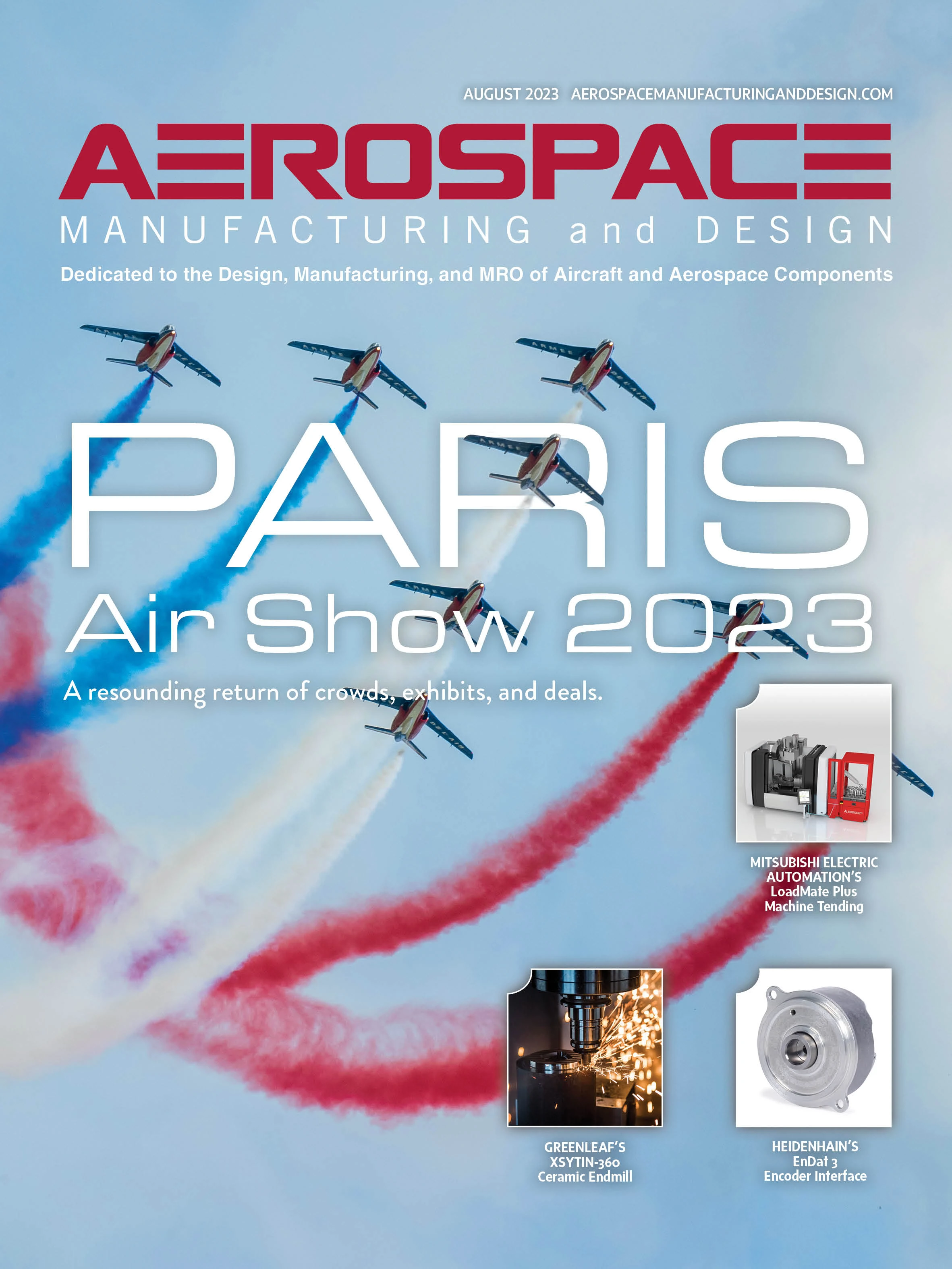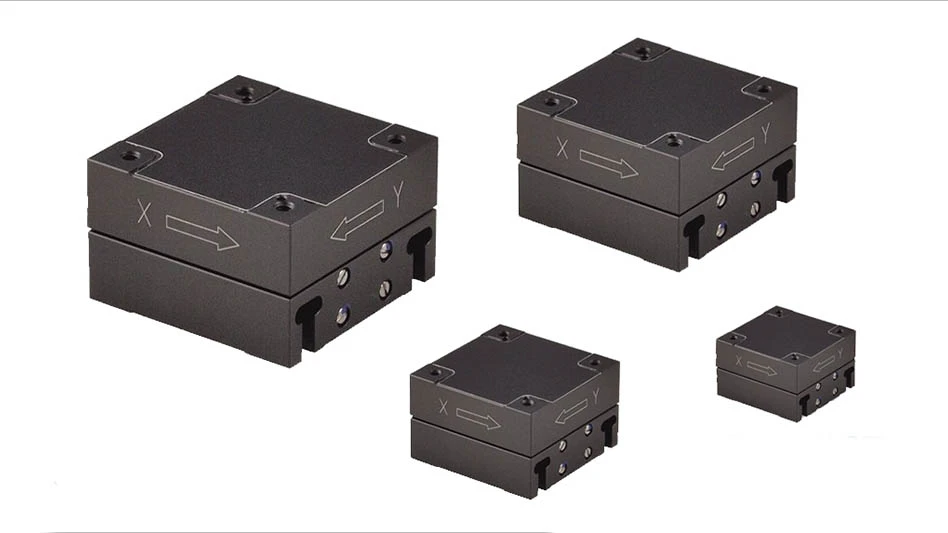

Increasingly used by industrial sectors and radically changing the way many products are made, additive manufacturing (AM) continues to be a driving force for advanced manufacturing prototyping and production. Expected to grow at a compound annual growth rate (CAGR) of 20.8% by 2030, this process of using digital design data to successfully create solid three-dimensional objects by fusing layers of material together [3D printing (3DP)] allows a great deal of flexibility in the production process, continuing to impact the industrial landscape.
Whether it’s tooling for composites, prototype aircraft, or automobile parts, product designs once thought too complex are now becoming a reality, thanks to more accurate and reliable 3DP technology. Advancements in motion control, power conversion, and robotics are helping expand the scope of AM, enabling fast creation of sophisticated, durable objects through methods such as selective laser melting (SLM), fused deposition modeling (FDM), and binder jetting.
Basic desktop 3D printers and those with stair stepper motors are giving way to servo-controlled 3D printers with high resolution feedback, allowing for high-speed position, velocity, and torque control. Six-axis robots with few limitations to potential printing angles and robust gantry systems for large structure printing are also being incorporated to complement this process, causing manufacturers to take another look at the possibilities this process and technology can bring.
AM is ideal for repairing old parts, customizing production parts, or prototyping/modeling new ones for manufacturers needing one-off parts or fixtures. Companies may use 3DP as part of their engineering design process, tooling, and fabricating unique geometries in-house.
AM benefits include:
Flexible production – Small scale manufacturing thrives on adapting and leveraging design freedom. 3DP’s ability to incorporate more than a hundred diverse materials and produce nearly any shape makes this a must-have for fab shops. Designers can reduce the individual parts used in an assembly, eliminating potential failure points for increased durability.
Cost-reduction – The additive process is less labor intensive and reduces the raw material used, saving valuable resources and money. For example, only printing the primary share of the part eliminates waste from machining away a small percent of raw material rather than machining away most unneeded material from a metal billet. Typical wire arc AM (WAAM) robotic arm systems can also be less expensive than powder-based AM printers. The Center for Advanced Manufacturing (CAM) at the University of Southern California (USC) Viterbi School of Engineering has been using WAAM for this very research, while reducing time and cost for various parts and tooling.
Production efficiency – With sluggish supply chains, 3DP offers an affordable and timely alternative to waiting weeks for much needed parts to arrive on the production floor, especially for quantity 1 custom parts. AM requires far less downtime, helping manufacturers produce parts or tooling on-demand, maintaining throughput for on-time delivery and project deadlines.
Other factors
Material considerations – The variety of compatible materials available for 3DP is also helping optimize this process. From plastic to plaster, there are viable options to fulfill unique application requirements.
Popular with robot use, WAAM uses metal filler wire in a gas metal arc welding (GMAW) process to produce conformal steel structures. Competing with traditional laser processes, new methods offer higher resolution by substituting wire for use of metal powder, facilitating a smoother end product with fewer lines. Enhanced high-deposition precision printing heads require little finishing and polishing also enabling higher-end parts.
Innovation solutions – To aid the additive process, offline programming platforms with 3DP software act as a link between the digital model and the actual model created. Known as 3DP slicer software, these platforms help transform the digital model into printing instructions, called G-code.
Companies, such as ADDiTEC, take AM a step further, offering an intuitive human machine interface (HMI) with a high-performance printing robot. The comprehensive solution can process two wire materials in a single part with the capability of printing powder and wire materials simultaneously, making the process ideal for the creation of highly complex components from demanding materials.
Accessible manufacturing
As manufacturing methods and advanced technology evolve, expect more robots to be used for 3DP – as most commercial 3D printers (plastic, metal, and other) are very expensive and are relegated to one specific job with a specific print area size. Robots add flexibility for part size options and allow for upgrading print heads as needed. A seventh axis can even be added for an extremely large part – especially helpful with creating a large range of parts, such as remote service facilities and prototyping.
The use of AM when used with robots is an expedient, cost-effective option for various applications. Whether a university is printing molds for carbon fiber layups or a large equipment manufacturer needs to create a part in a pinch to complete an order, the flexibility 3DP provides makes the manufacturing of parts more accessible for fluid production.
NEWS AND PRODUCTS
Advanced multi-camera solutions

An extensive multi-camera solution fully unlocks Qualcomm’s RB5 Kit’s potential, allowing connection of up to 6 cameras – MIPI or GMSL2 or a combination of both, simultaneously. e-con Systems’ camera solution along with Qualcomm’s high computer power of 15 tera operations per second (TOPS), low power consumption, and thermal dissipation, fits applications such as drones and delivery robots.
Testing cognitive autonomous robots in airframe manufacturing

Xaba and Lockheed Martin evaluated the automation of crucial manufacturing operations using the global aerospace company’s industrial robots integrated with Xaba’s proprietary physics-informed deep artificial neural network model, xCognition.
Xaba and Lockheed Martin identified a use case focused on a typical robotics work cell used in any aerospace factory to test how Xaba’s xCognition synthetic brain could empower a commercial robot with greater intelligence and understanding of its body and the task it’s about to execute while ensuring required quality and tolerances are achieved.
Based on the data collected by the Lockheed Martin and Xaba teams, xCognition improved accuracy and consistency of the commercial robot by a factor of 10x. This test shows how industrial robotics augmented with xCognition can perform crucial manufacturing operations that until now have been exclusively done by more expensive and less flexible CNC machines.
Carbon-carbon composite components

Karman Space & Defense is expanding production capacity for carbon-carbon (C-C) composite components to support the growing production volumes for MG resin and ultra-high temperature materials used in space and defense applications. The expansion includes new facility space and equipment for larger components, increased product rates, and high-temperature material testing.
Karman’s MG Resin technology addresses the need for ultra-high temperature materials with higher char yields, improved processability, and reduced cycle times. The combined mechanical properties of these unique resins enable the production of high-strength carbon-carbon components and structures for propulsion systems, missiles, hypersonic systems, and spacecraft at lower costs and reduced lead times.
AI-powered robot controller

Artificial intelligence-powered robot control software MIRAI helps automate complex tasks too difficult or costly to automate with traditional programming. Previously compatible exclusively with Universal Robots and FANUC robots, MIRAI will be available for KUKA robots in early Q4, followed by other collaborative robots (cobots) and industrial robots as requested.
Using AI, MIRAI generates robot movements directly and in real time. Robot skills (or specific tasks) are trained, not programmed, in a few days through human demonstration, without users needing programming or AI knowledge. The robot is repeatedly shown a task and the environment with the help of a camera typically mounted on the robot’s wrist. The recorded movements are transformed into a skill capable of handling variances and dynamic environmental conditions.
To become vendor agnostic, Micropsi Industries partnered with integration software company voraus robotik. MIRAI will enable all 6-axis robots and other kinematics, including cobots and industrial robots, to handle variances and dynamic environmental conditions such as light changes, oil, and rust.
Robot users also benefit from a user-friendly no-code programming interface and an integrated development environment for individual extensions. Customers requesting MIRAI-controlled solutions for specific robots they prefer can expect to receive the systems within a few weeks.

Explore the August 2023 Issue
Check out more from this issue and find your next story to read.
Latest from Aerospace Manufacturing and Design
- Talking machine tools with the professionals who build them
- Tools and strategies for improving your machining processes
- America Makes announces QTIME project call
- Innovation meets precision for 40% faster machining
- Upcoming webinar: Pro tips from a supply chain strategist
- Heart Aerospace relocates to Los Angeles
- Fixtureworks introduces Stablelock Clamps
- Piasecki acquires Kaman's KARGO UAV program






